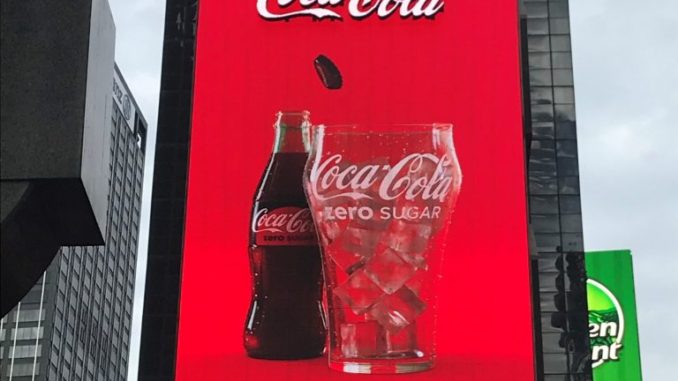
OOH+DIGITAL MEDIA: WHEN 1+1=3
OOH: A CRITICAL COMPLEMENT TO DIGITAL MARKETING
by Mark Boidman
Head of Media & Tech Services, PJ SOLOMON
[email protected]
Ethan Volk
Analyst, Media & Tech Services, PJ SOLOMON
[email protected]
Over the past 20 to 30 years, we have seen a technological revolution. Computers that used to take up entire rooms now fit in our pockets and televisions that used to only have a few channel choices now offer thousands of programming options. In the world of advertising it has become increasingly difficult to reach a consumer bombarded with anywhere from 5,000 to 10,000 messages a day through digital media. It’s for that reason that we believe that out of home (OOH) media is a critical complement to digital marketing and the most impactful way to reach consumers.
OOH media is defined as any media consumed and displayed outside the home in the physical world. OOH touches areas such as billboards, transit, cinema, malls, gas stations, elevators, sports, restaurants, hotels, airports, gyms and much more. And yet, OOH has historically been relegated by marketers to the lower end of the marketing mix. Given that people are spending 70% or more of their waking hours outside of their homes, all other media channels are more effective in conjunction with an OOH campaign.1
According to a 2017 report by PageFair, 30% of people blocked online and mobile ads to avoid viruses and 29% blocked ads to avoid interruptions and distractions. Since the inception of the internet there have been issues with viruses and malware, many times caused by clicking on the wrong “advertisement.” The number of people globally who have used online and mobile ad blocking software has increased in the last few years, from 39 million in 2012 to nearly 220 million in 2016.2 This trend will only continue and the result is that dollars spent on digital advertising will go wasted as consumers increasingly block out advertisements.Online ads are generally unwanted ads that disrupt the user experience. On the other hand, OOH may enhance consumer experiences by sharing the right ad in the right location at the right time to the right audience. For example, if a person were to go to Yankee Stadium and see a Coca-Cola billboard on the left field wall, they would not necessarily feel that the ad was taking away from their experience. They expect to see ads in a baseball stadium. It is part of the experience. It would be a different story if he or she went to the Yankees website and was interrupted by a pop-up ad or other marketing that distracted from the online experience.
Privacy concerns are yet another reason why we are so bullish on the outlook for OOH. Whether it’s through cookies or other measures, online and mobile advertisers track where you are spending your time to send you relevant advertising. While some consumers may like this kind of targeted advertising, many do not and are becoming increasingly wary of how their data is being used.New location-based technologies can indicate when consumers are near OOH advertisements. If you can measure how many people that were exposed to the ad then visited a store to make a purchase, you have closed the loop for marketers and demonstrated the value of OOH as part of the marketing mix. While this technology is very new, it has the potential to revolutionize OOH media. With all of this in mind, it must be said that digital media and advertising are still incredibly effective, both in isolation and especially in conjunction with OOH media.
Technology has been a friend to OOH, much more so than to newspapers, magazines, radio and other classic media channels. This competitive advantage is going to allow the OOH advertising industry to defend and take share of total advertising spend. Across numerous cities, we are seeing integration of mobile into OOH. It’s just a matter of time before we feel the excitement and energy in the physical world as if it is Times Square everywhere.
1 Source: OAAA•••••••••
2 Source: Pagefair
ABOUT THE AUTHOR AND PJ SOLOMON’S MEDIA & TECH SERVICES
The PJ SOLOMON Media & Tech Services team provides investment banking advisory and financing services to advertising and marketing services-based businesses, global out of home media, A/V, global retail tech / in-store media, and event technology companies.The practice is led by industry veteran Mark Boidman, who has been recognized by digital media industry executives and professional publications as a leading investment banker in the media and technology sectors. He has nearly 20 years’ experience in public and private mergers and acquisitions, divestitures, leveraged financings, private placements and restructurings. PJ SOLOMON, a leading financial advisory firm with a legacy as one of the first independent investment banks, advises clients on mergers, acquisitions, divestitures, restructurings, recapitalizations, capital markets solutions and activism defense across a range of industries.
